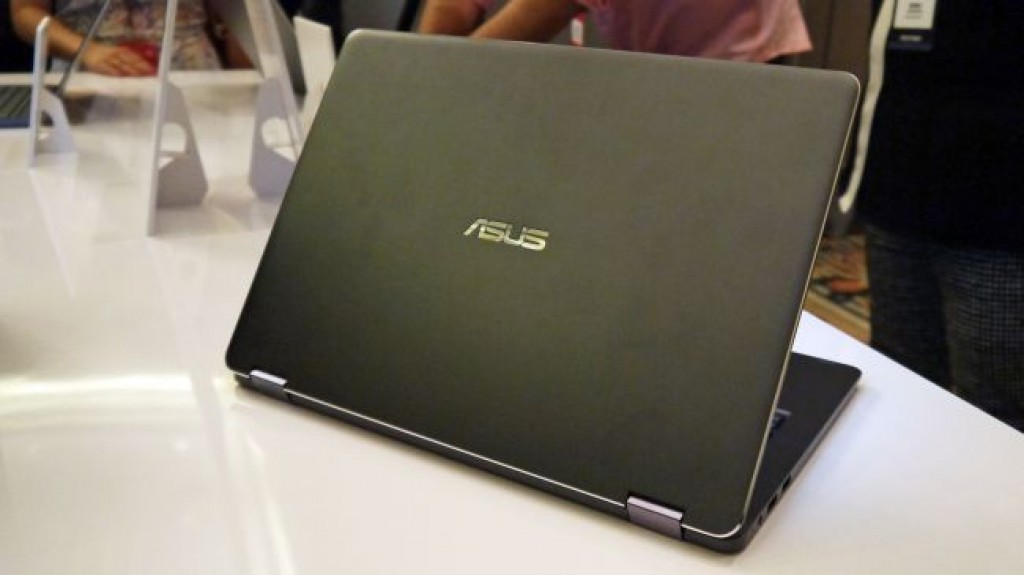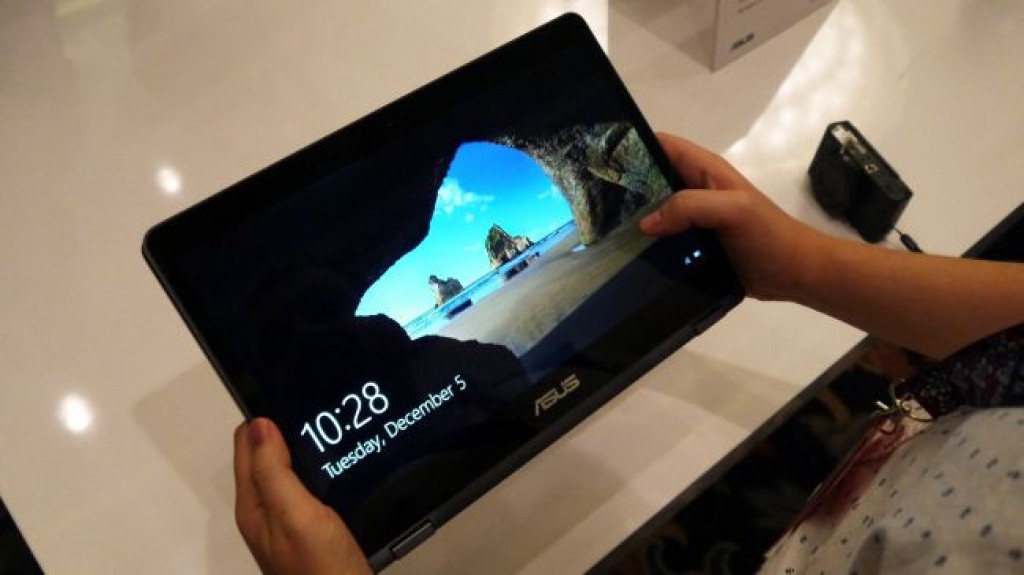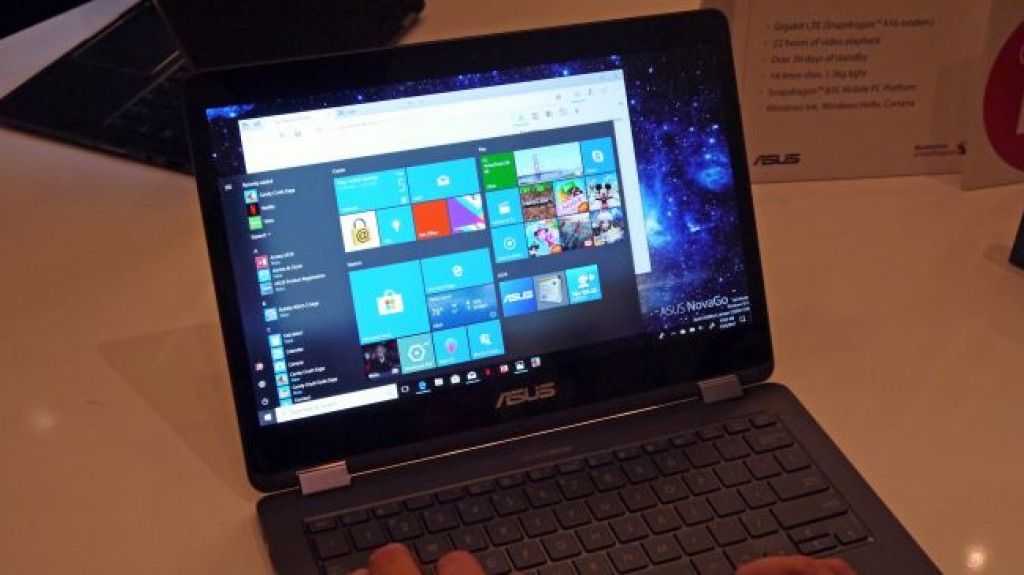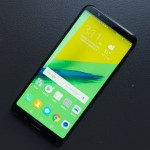
OUR EARLY VERDICT
The Asus NovaGo blends wireless connectivity of the future with ports of the past in an average-looking 2-in-1 foldable laptop design. It promises better than all-day battery life and and an amazing 22 hours of video playback. We’ll continue to test that and its performance in a full review coming soon.
FOR
- Proper ports (USB-A, 3.5mm, HDMI)
- Always-on Windows 10
- Up to 22 hours of claimed battery
AGAINST
- Still a little on the heavy side
- Plastic design isn’t most striking
- No USB-C ports
The Asus NovaGo is future of laptops, even if it looks a lot like other 2-in-1 foldable notebooks on the outside.
It the first ‘Always Connected’ Gigabit Windows laptop and boasts better than all-day battery life thanks to its Snapdragon 835 chipset and Snapdragon X16 LTE modem.
This means we’re now seeing a laptop capable of 1Gbps speeds, which are three to seven times faster than your broadband speeds at home, depending on where you live.
No need to tether with a smartphone, and no need to deal with offline mode in documents as this always-connected Windows machine has a built-in eSIM, plus a battery that’s capable of up to 22 hours of video playback.
It almost sounds too good to be true, so we’ve gone hands on with the NovaGo to see if the early signs are positive.
Asus Nova Go price and release date
The Asus NovaGo price starts at just $599 for the 4GB of RAM with 64GB of storage variant, while you’re looking at $799 for the 8GB/256GB model.
Asus tells us that it will also offer a 128GB of storage option, and there may be a 6GB of RAM configuration available too, but it will vary depending on regions and what retailers want in terms of spec.
What it does mean is the Asus NovaGo is cheaper than some of the flagship Android smartphones that also feature Qualcomm’s Snapdragon 835 chipset, which puts it into a reasonably affordable category.
There’s currently no firm Asus NovaGo release date, but an Asus spokesperson told us that it’s expected to arrive in early Spring in the US, while it’s likely to arrive in Europe (the UK, France, Germany and Italy) during Q2 of 2018.
Design
The Asus NovaGo is built for mobility, affordability and longevity, so it doesn’t do anything to innovate on the 2-in-1 foldable designs we’ve seen over the last two years.
The plastic design of this 13.3-inch laptop doesn’t stand out from ultra-slim laptops encases in aluminum like the 13-inch MacBook or the Dell XPS 13, but it’s not all bad news. There is something the NovaGo does have. Ports.

While other computer manufacturers are shedding standardize ports in favor of newer USB-C options, and them alone, the Asus NovaGo kicks it old-school with two USB 3 Type-A ports, an audio jack, an HDMI port and a microSD card slot.
The chipset behind the Asus NovaGo comes straight from smartphones, so we were into the fact that the volume and power keys are aligned along the right side of the laptop. This is shaping up to be the always-connected laptop counterpart to a smartphone in so many ways.
Its metal hinges feel strong and allow the laptop fold back for the Windows 10 tablet and tent modes. We were able to test out Microsoft Paint with a stylus in this mode and it also takes advantage of Windows Ink (not available in our demo).
Windows Hello face unlock sign-in and video conferencing are possible through the 1MP HD front camera that has a 1280 x 720 resolution and f2.0 aperture lens. There’s also a fingerprint sensor embedded in the quite spacious, clickable trackpad.
Display

The Asus NovaGo features a 13.3-inch full HD display which is bright and clear thanks to the LED back-lit panel, although it’s not going to blow you away with eye-popping visuals.
We found the screen glass to be pretty reflective, which could well cause trouble in bright light, but the 1920 x 1080 resolution is good enough for most tasks on the device, including touch screen input, text entry and even stylus usage.
Power and performance

The Asus NovaGo doesn’t feature a traditional PC chipset, instead relying on Qualcomm’s Snapdragon 835 SoC more commonly found in flagship smartphones such as the LG V30, HTC U11 Plus and the US variant of the Samsung Galaxy S8.
Performance then is unproven, and during our hands on time with the NovaGo we were unable to run our in-depth benchmark tests to see just how well it can do. This is something we will do during our full review of the NovaGo though, so keep an eye out for that in the coming months.
For now though, even with the top tier 8GB of RAM, we have our reservations about just how powerful this laptop can be. It’s certainly not a gaming machine, as it’ll likely be more at home with Solitaire rather than PUBG, but we were able to load up Word, Paint and the Edge browser without any hassle.
What’s really cool about the Snapdragon power though is the NovaGo’s always-on state. If you don’t shut down the device, and instead just close the lid it has a similar effect to locking your smartphone screen.
Open the lid back up, and you’re instantly transported right back to where you left off. There’s no loading icon or a wait while it exits hibernation – it’s ready to go right away.
Early verdict
The Asus NovaGo presents a glimpse of an always-connected laptop future with what promises to be stellar battery life, mixed with last year’s smartphone chipset and older ports.
It has us excited for what this laptop eliminates more than it introduces. Not having to connect to unsecure Wi-Fi, setup a hotspot or worry as much about battery life is a brilliant change that makes it possible to use this laptop anyway.
Performance is the wildcard. How does Qualcomm’s smartphone chipset backed by a lot of RAM compare to laptop that have the usual Intel CPUs at the heart?
That’s going to require more testing of the Asus NovaGo in a full review coming soon.
Source: techradar.com









































